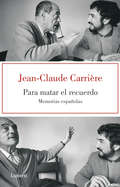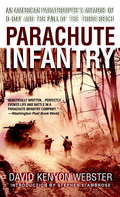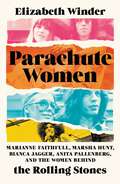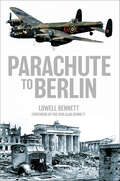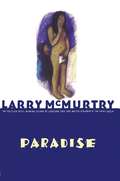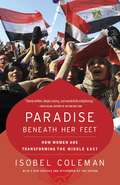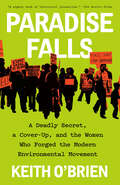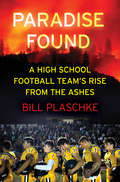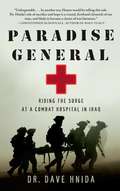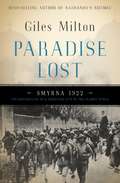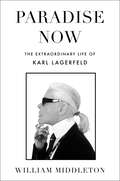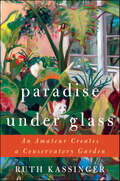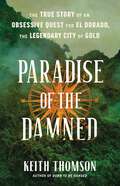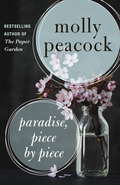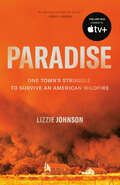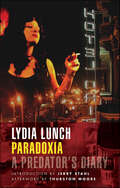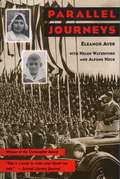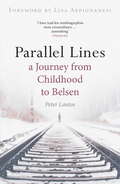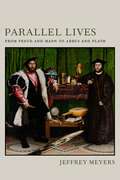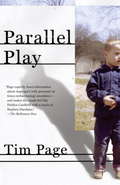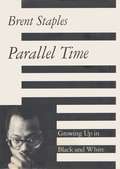- Table View
- List View
Para matar el recuerdo: Memorias españolas
by Jean-Claude CarrièreEl extraordinario relato de la relación con España de Jean-Claude Carrière, el guionista de Buñuel. A lo largo de su rica y variada vida profesional en el mundo del cine, Jean-Claude Carrière ha sido testigo privilegiado de la historia de España en los últimos cincuenta años. Colaborador predilecto de Luis Buñuel en los guiones de películas ya clásicas como Diario de una camarera, El discreto encanto de la burguesía, La Vía Láctea o Ese oscuro objeto del deseo, Carrière evoca en este libro su larga relación con nuestro país, desde que en su infancia viera aparecer a dos niños republicanos en su colegio hasta su época de intenso trabajo con Buñuel, que supuso para el joven guionista el descubrimiento de un mundo perdido, de una España que ya sólo existía en la memoria del cineasta aragonés, aunque todavía pudieran visitar juntos algunos de sus escenarios. De la mano de Buñuel, Carrière conoció también a otros personajes inmensos como Pepín Bello, José Bergamín, Fernando Rey o Francisco Rabal, protagonistas en este libro de inolvidables escenas nunca antes publicadas. Pero más allá de Buñuel, Carrière habla aquí sobre todo de la esencia del país y de la idiosincrasia de los españoles, de su compleja historia, de su arte, de su insondable misterio.
Parachute Infantry: An American Paratrooper's Memoir of D-Day and the Fall of the Third Reich
by David Webster<p>David Kenyon Webster's memoir is a clear-eyed, emotionally charged chronicle of youth, camaraderie, and the chaos of war. Relying on his own letters home and recollections he penned just after his discharge, Webster gives a first hand account of life in E Company, 101st Airborne Division, crafting a memoir that resonates with the immediacy of a gripping novel. <p>From the beaches of Normandy to the blood-dimmed battlefields of Holland, here are acts of courage and cowardice, moments of irritating boredom punctuated by moments of sheer terror, and pitched urban warfare. Offering a remarkable snapshot of what it was like to enter Germany in the last days of World War II, Webster presents a vivid, varied cast of young paratroopers from all walks of life, and unforgettable glimpses of enemy soldiers and hapless civilians caught up in the melee. <p><i>Parachute Infantry</i> is at once harsh and moving, boisterous and tragic, and stands today as an unsurpassed chronicle of war--how men fight it, survive it, and remember it. NOTE: This edition does not include photos.</p>
Parachute Women: Marianne Faithfull, Marsha Hunt, Bianca Jagger, Anita Pallenberg, and the Women Behind the Rolling Stones
by Elizabeth WinderDiscover the true story of the four women who worked tirelessly behind the scenes to help shape and curate the image of The Rolling Stones—perfect for fans of Girls Like Us. The Rolling Stones have long been considered one of the greatest rock-and-roll bands of all time. At the forefront of the British Invasion and heading up the counterculture movement of the 1960s, the Stones' innovative music and iconic performances defined a generation, and fifty years later, they're still performing to sold-out stadiums around the globe. Yet, as the saying goes, behind every great man is a greater woman, and behind these larger-than-life rockstars were four incredible women whose stories have yet to be fully unpacked . . . until now.In Parachute Women, Elizabeth Winder introduces us to the four women who inspired, styled, wrote for, remixed, and ultimately helped create the legend of the Rolling Stones. Marianne Faithfull, Marsha Hunt, Bianca Jagger, and Anita Pallenberg put the glimmer in the Glimmer Twins and taught a group of straight-laced boys to be bad. They opened the doors to subterranean art and alternative lifestyles, turned them on to Russian literature, occult practices, and LSD. They connected them to cutting edge directors and writers, won them roles in art house films that renewed their appeal. They often acted as unpaid stylists, providing provocative looks from their personal wardrobes. They remixed tracks for chart-topping albums, and sometimes even wrote the actual songs. More hip to the times than the rockers themselves, they consciously (and unconsciously) kept the band current—and confident—with that mythic lasting power they still have today.Lush in detail and insight, and long overdue, Parachute Women is a group portrait of the four audacious women who transformed the Stones into international stars, but who were themselves marginalized by the male-dominated rock world of the late '60s and early '70s. Written in the tradition of Sheila Weller's Girls Like Us, it's a story of lust and rivalries, friendships and betrayals, hope and degradation, and the birth of rock and roll.
Parachute to Berlin
by Lowell BennettThe vivid account of a war correspondent shot down over Germany and taken prisoner.Bennett was one of several journalists to fly a night raid over Berlin in November 1943. This is the vivid testimony of an American journalist shot down over Berlin. After he was captured in Berlin, he was taken on a tour of Germany and shown what the civilian population was being subjected to. Bennett spent the rest of the war in Stalag Luft I, where he started the newspaper POW WOW, secretly read by 9,000 prisoners. Bennett's experiences led him to condemn the Allied policy of systematically bombing civilian population centers.
Paradise
by Larry McmurtryIn 1999, Larry McMurtry, whose wanderlust had been previously restricted to the roads of America, set off for a trip to the paradise of Tahiti and the South Sea Islands in an old-fashioned tub of a cruise boat, at a time when his mother was slipping toward a paradise of her own. Opening up to her son in her final days, his mother makes a stunning revelation of a previous marriage and sends McMurtry on a journey of an entirely different kind. Vividly, movingly, and with infinite care, McMurtry paints a portrait of his parents' marriage against the harsh, violent landscape of west Texas. It is their roots -- laced with overtones of hard work, bitter disappointment, and the Puritan ethic -- that McMurtry challenges by traveling to Tahiti, a land of lush sensuality and easy living. With fascinating detail, shrewd observations, humorous pathos, and unforgettable characters, he begins to answer some of the questions of what paradise is, whether it exists, and how different it is from life in his hometown of Archer City, Texas.
Paradise Beneath Her Feet: How Women are Transforming the Middle East
by Isobel ColemanThrough the remarkable stories of women from five countries, Coleman reveals how women, working within Islam, are transforming the Middle East.
Paradise Falls: The True Story of an Environmental Catastrophe
by Keith O'BrienThe staggering story of an unlikely band of mothers in the 1970s who discovered Hooker Chemical's deadly secret of Love Canal—exposing one of America&’s most devastating toxic waste disasters and sparking the modern environmental movement as we know it today.&“Propulsive...A mighty work of historical journalism...A glorious quotidian thriller about people forced to find and use their inner strength.&” —The Boston Globe Lois Gibbs, Luella Kenny, and other mothers loved their neighborhood on the east side of Niagara Falls. It had an elementary school, a playground, and rows of affordable homes. But in the spring of 1977, pungent odors began to seep into these little houses, and it didn&’t take long for worried mothers to identify the curious scent. It was the sickly sweet smell of chemicals. In this propulsive work of narrative storytelling, NYT journalist Keith O&’Brien uncovers how Gibbs and Kenny exposed the poisonous secrets buried in their neighborhood. The school and playground had been built atop an old canal—Love Canal, it was called—that Hooker Chemical, the city&’s largest employer, had quietly filled with twenty thousand tons of toxic waste in the 1940s and 1950s. This waste was now leaching to the surface, causing a public health crisis the likes of which America had never seen before and sparking new and specific fears. Luella Kenny believed the chemicals were making her son sick. O&’Brien braids together previously unknown stories of Hooker Chemical&’s deeds; the local newspaperman, scientist, and congressional staffer who tried to help; the city and state officials who didn&’t; and the heroic women who stood up to corporate and governmental indifference to save their families and their children. They would take their fight all the way to the top, winning support from the EPA, the White House, and even President Jimmy Carter. By the time it was over, they would capture America&’s imagination. Sweeping and electrifying, Paradise Falls brings to life a defining story from our past, laying bare the dauntless efforts of a few women who—years before Erin Brockovich took up the mantle— fought to rescue their community and their lives from the effects of corporate pollution and laid foundation for the modern environmental movement as we know it today.
Paradise Found: A High School Football Team's Rise from the Ashes
by Bill Plaschke"Friday Night Lights meets Unbroken." —Tony Reali | "One of the most profound stories you will ever read." —Ian O'Connor | "Plaschke delivers a masterpiece." —Jeff PearlmanFrom L.A. Times columnist and ESPN Around the Horn panelist Bill Plaschke, a story of tragedy, triumph, and the remarkable power of high school football in one small California townOn November 8, 2018, the Camp Fire ravaged the town of Paradise, California. The fire, which burned up to 80 acres per minute, killed 86 people, and nearly every building and home in the town was reduced to ashes. In a single day, Paradise, a proud working-class town in the foothills of the Sierra Nevadas, saw its population fall from 25,000 to 2,000.The Paradise High football team had long been the town’s source of joy and inspiration. But in the wake of the fire, their season was abruptly cancelled on the eve of the playoffs. Their championship hopes were gone. Their program’s survival seemed doubtful—it wasn’t even clear whether Paradise High would continue to exist.Coach Rick Prinz had planned to retire that year after guiding the Paradise High Bobcats for two decades. But after the fire forever altered his beloved town, he realized he couldn’t walk away. What ensued was the challenge of a lifetime. Of the 104 football players at Paradise, 95 had lost their homes. His varsity squad, which had stood 76 strong the previous season, was down to 22. Most of those who remained were homeless, sleep-deprived, lost. On the first day of spring practice, on a debris-ridden patch of grass at nearby Chico Airport, Prinz’s team didn’t even have a football. It was the humble beginning to a memorable journey.Bill Plaschke, longtime columnist for the Los Angeles Times, followed the Paradise Bobcats throughout a most remarkable season. In this gripping, deeply-reported story of tragedy and resilience, Plaschke reveals the unique power of sports to unite, to inspire, and to heal. As the Paradise players fought to rebuild their broken lives, they found strength in the support of their teammates—and as football returned to Paradise, so, too, did the spirit of the town itself.
Paradise General: Riding the Surge at a Combat Hospital in Iraq
by Dave HnidaIN 2004, AT THE AGE OF FORTY-EIGHT, DR. DAVE HNIDA, a family physician from Littleton, Colorado, volunteered to be deployed to Iraq and spent a tour of duty as a battalion surgeon with a combat unit. In 2007, he went back--this time as a trauma chief at one of the busiest Combat Support Hospitals (CSH) during the Surge. In an environment that was nothing less than a modern-day M*A*S*H, the doctors' main objective was simple: Get 'em in, get 'em out. The only CSH staffed by reservists-- who tended to be older, more-experienced doctors disdainful of authority--the 399th soon became a medevac destination of choice because of its high survival rate, an astounding 98 percent. This was fast-food medicine at its best: working in a series of tents connected to the occasional run-down building, Dr. Hnida and his fellow doctors raced to keep the wounded alive until they could be airlifted out of Iraq for more extensive repairs. Here the Hippocratic Oath superseded that of the pledge to Uncle Sam; if you got the red-carpet helicopter ride, his team took care of you, no questions asked. On one stretcher there might be a critically injured American soldier while three feet away lay the insurgent, shot in the head, who planted the IED that inflicted those wounds. But there was levity amid the chaos. On call round-the-clock with an unrelenting caseload, the doctors' prescription for sanity included jokes, pranks, and misbehavior. Dr. Hnida's deployment was filled with colorful characters and gifted surgeons, a diverse group who became trusted friends as together they dealt with the psychological toll of seeing the casualties of war firsthand. In a conflict with no easy answers and even less good news, Paradise General gives us something that we can all believe in--the story of an ordinary citizen turned volunteer soldier trying to make a difference. With honesty and candor, and an off-the-wall, self-deprecating humor that sustained him and his battle buddies through their darkest hours, Dr. Hnida delivers a devastating and inspiring account of his CSH tour and an unparalleled look at medical care during an unscripted war.
Paradise Lost
by Giles MiltonOn Saturday, September 9, 1922, the victorious Turkish cavalry rode into Smyrna, the richest and most cosmopolitan city in the Ottoman Empire. The city’s vast wealth created centuries earlier by powerful Levantine dynasties, its factories teemed with Greeks, Armenians, Turks, and Jews. Together, they had created a majority Christian city that was unique in the Islamic world. But to the Turkish nationalists, Smyrna was a city of infidels. In the aftermath of the First World War and with the support of the Great Powers, Greece had invaded Turkey with the aim of restoring a Christian empire in Asia. But by the summer of 1922, the Greeks had been vanquished by Atatürk’s armies after three years of warfare. As Greek troops retreated, the non-Muslim civilians of Smyrna assumed that American and European warships would intervene if and when the Turkish cavalry decided to enter the city. But this was not to be. On September 13, 1922, Turkish troops descended on Smyrna. They rampaged first through the Armenian quarter, and then throughout the rest of the city. They looted homes, raped women, and murdered untold thousands. Turkish soldiers were seen dousing buildings with petroleum. Soon, all but the Turkish quarter of the city was in flames and hundreds of thousands of refugees crowded the waterfront, desperate to escape. The city burned for four days; by the time the embers cooled, more than 100,000 people had been killed and millions left homeless. Based on eyewitness accounts and the memories of survivors, many interviewed for the first time, Paradise Lost offers a vivid narrative account of one of the most vicious military catastrophes of the modern age.
Paradise Lost and the Cosmological Revolution
by Dennis DanielsonThis volume brings John Milton's Paradise Lost into dialogue with the challenges of cosmology and the world of Galileo, whom Milton met and admired: a universe encompassing space travel, an earth that participates vibrantly in the cosmic dance, and stars that are "world[s] / Of destined habitation. " Milton's bold depiction of our universe as merely a small part of a larger multiverse allows the removal of hell from the center of the earth to a location in the primordial abyss. In this wide-ranging work, Dennis Danielson lucidly unfolds early modern cosmological debates, engaging not only Galileo but also Copernicus, Tycho, Kepler, and the English Copernicans, thus placing Milton at a rich crossroads of epic poetry and the history of science.
Paradise Lost: A Life of F. Scott Fitzgerald
by David S. BrownPigeonholed as a Jazz Age epicurean and an emblem of the Lost Generation, Fitzgerald was at heart a moralist struck by the nation’s shifting mood and manners after WWI. Placing him among Progressives such as Charles Beard, Randolph Bourne, and Thorstein Veblen, David Brown reveals Fitzgerald as a writer with an encompassing historical imagination.
Paradise Now: The Extraordinary Life of Karl Lagerfeld
by William MiddletonThe definitive biography of fashion icon Karl Lagerfeld, written by journalist and author William Middleton, who knew the designer in Paris.In February 2019, the world lost one of its most enduring cultural icons, Karl Lagerfeld, the creative director for the storied House of Chanel for thirty-five years. Larger than life, Lagerfeld was legendary not only for reinventing Chanel; and creating constant fashion excitement at Chloé, Fendi, and his eponymous brand; but also for his vivid personal style, including his signature uniform of dark sunglasses and a powdered white ponytail. And then there was his utter devotion to his cat, Choupette.Journalist and author William Middleton spent years working in Paris for Women’s Wear Daily, W, and Harper’s Bazaar. During his time in Paris, he interviewed and socialized with Lagerfeld, coming to see a side of the designer that he kept private from the world.In this deliciously entertaining book, Middleton takes us inside the most exclusive rooms in the fashion industry, behind the catwalk, and into a world of brilliantly talented artists, stylish socialites, and famous stars—some of the most elusive and unforgettable figures of fashion’s inner circle for the past four decades.
Paradise Under Glass: The Education of an Indoor Gardener
by Ruth KassingerParadise Under Glass is a witty and absorbing memoir about one woman’s unlikely desire to build, stock, and tend a small conservatory in her suburban Maryland home. Ruth Kassinger’s wonderful story of the unique way she chose to cope with the profound changes in her life—a book that will delight readers of Eat, Pray, Love and I Feel Bad About My Neck—is interwoven with the fascinating history of conservatories from the Renaissance orangeries to the glass palaces of Kew.
Paradise of the Damned: The True Story of an Obsessive Quest for El Dorado, the Legendary City of Gold
by Keith ThomsonA &“rollicking,&” &“vividly re-created,&” and &“enticing romp&” that tells the true story of an obsessive quest to find El Dorado, set against the backdrop of Elizabethan political intrigue and a competition with Spanish conquistadors for the legendary city&’s treasure, all in a &“breezy tale starring an audacious hero" (Wall Street Journal) As early as 1530, reports of El Dorado, a city of gold in the South American interior, beckoned to European explorers. Whether there was any truth to the stories remained to be seen, but the allure of unimaginable riches was enough to ensnare dozens of would-be heroes and glory hounds in the desperate hunt. Among them was Sir Walter Raleigh: ambitious courtier, confidant to Queen Elizabeth, and, before long, El Dorado fanatic. Entering the Elizabethan court as an upstart from a family whose days of nobility were far behind them, Raleigh used his military acumen, good looks, and sheer audacity to scramble into the limelight. Yet that same swagger proved to be his undoing, as his secret marriage to a lady-in-waiting enraged Queen Elizabeth and landed him in the Tower of London. Between his ensuing grim prospects at court and his underlying lust for adventure, the legend of El Dorado became an unwavering siren song that hypnotized Raleigh. On securing his release, he journeyed across an ocean to find the fabled city, gambling his painstakingly acquired wealth, hard-won domestic bliss, and his very life. What awaited him in the so-called New World were endless miles of hot, dense jungle packed with deadly flora and fauna, warring Spanish conquistadors and Indigenous civilizations, and other unforeseen dangers. Meanwhile, back at home, his multitude of rivals plotted his demise. Paradise of the Damned, like Keith Thomson&’s critically acclaimed Born to Be Hanged, brings this story to life in lush and captivating detail. The book charts Raleigh&’s obsessive search for El Dorado—as well as the many doomed expeditions that preceded and accompanied his—providing not only an invaluable history but also a gripping narrative of traveling to the ends of the earth only to realize, too late, that what lies at home is the greatest treasure of all.
Paradise, Piece by Piece
by Molly PeacockYou can ask that a book tell you a compelling story, that it dazzle you with vivid writing, that its emotional content be pure and stirring, that the issues it tackles be timely, relevant, and put forth with candour and a tonic dose of humour. Paradise, Piece by Piece is such a book. Molly Peacock is an award-winning writer, and Paradise, Piece by Piece describes the coming of age of a poet and the flowering of her art. It is a self-portrait that speaks to the most intimate questions a woman can ask of herself and answers them with courageous introspection. It is the story of a child who had to grow up too soon; of the complicated web of relationships in which she, like all of us, defines herself - loyal friends, quirky relations, and tempestuous lovers; of the lifelong labour of self-determination, and finding ultimate fulfilment.Peacock's language is emotionally charged, full of wit and dead-on accuracy. Her skill with narrative and character, her ability to write a vibrant scene, make her memoir as compelling as good fiction. Paradise, Piece by Piece is a virtuoso performance.
Paradise: One Town's Struggle to Survive an American Wildfire
by Lizzie JohnsonThe definitive firsthand account of California&’s Camp Fire, the nation&’s deadliest wildfire in a century, Paradise is a riveting examination of what went wrong and how to avert future tragedies as the climate crisis unfolds&“A reportorial tour de force.&”—Erik Larson, author of The Splendid and the Vile On November 8, 2018, the people of Paradise, California, awoke to a mottled gray sky and gusty winds. Soon the Camp Fire was upon them, gobbling an acre a second. Less than two hours after the fire ignited, the town was engulfed in flames, the residents trapped in their homes and cars. By the next morning, eighty-five people were dead.As a reporter for the San Francisco Chronicle, Lizzie Johnson was there as the town of Paradise burned. She saw the smoldering rubble of a historic covered bridge and the beloved Black Bear Diner and she stayed long afterward, visiting shelters, hotels, and makeshift camps. Drawing on years of on-the-ground reporting and reams of public records, including 911 calls and testimony from a grand jury investigation, Johnson provides a minute-by-minute account of the Camp Fire, following residents and first responders as they fight to save themselves and their town. We see a young mother fleeing with her newborn; a school bus full of children in search of an escape route; and a group of paramedics, patients, and nurses trapped in a cul-de-sac, fending off the fire with rakes and hoses.In Paradise, Johnson documents the unfolding tragedy with empathy and nuance. But she also investigates the root causes, from runaway climate change to a deeply flawed alert system to Pacific Gas and Electric&’s decades-long neglect of critical infrastructure. A cautionary tale for a new era of megafires, Paradise is the gripping story of a town wiped off the map and the determination of its people to rise again.
Paradoxia: A Predator's Diary
by Lydia LunchThe unspeakable sexual confessions of underground legend Lydia Lunch.—Included in Flavorwire’s “An Essential Punk Literature Reading List"“Paradoxia is compelling, exhilarating, and infinitely readable.” —PaperParadoxia contains frank and often shocking confessions. Lydia Lunch relays in graphic detail a predator’s diary, revealing the true psychic repercussions of sexual misadventure. From New York to London to New Orleans, Paradoxia is an uncensored, novelized account of one woman’s assault on the male of the species.
Parallel Journeys
by Alfons Heck Eleanor H. Ayer Helen WaterfordShe was a young German Jew. He was an ardent member of the Hitler Youth. This is the story of their pareallel journey through World War II. Helen Waterford and Alfons Heck were born just a few miles from each other in the German Rhineland. But their lives took radically different courses: Helen's to the Auschwitz extermination camp; Alfons to a high rank in the Hitler Youth.While Helen was hiding in Amserdam, Alfons was a fanatic believer in Hitler's "master race." While she was crammed in a cattle car bound for the death camp Aushchwitz, he was a tennage commander of frontline troopes, ready to fight and die for the glory of Hitler and the Fatherland. This book tells both of their stories, side-by-side, in an overwhelming account of the nightmare that was WWII. The riveting stories of these two remarkable people must stand as a powerful lesson to us all.
Parallel Journeys
by Eleanor H. AyerShe was a young German Jew. He was an ardent member of the Hitler Youth. This is the story of their pareallel journey through World War II. Helen Waterford and Alfons Heck were born just a few miles from each other in the German Rhineland. But their lives took radically different courses: Helen's to the Auschwitz extermination camp; Alfons to a high rank in the Hitler Youth.While Helen was hiding in Amserdam, Alfons was a fanatic believer in Hitler's "master race." While she was crammed in a cattle car bound for the death camp Aushchwitz, he was a tennage commander of frontline troopes, ready to fight and die for the glory of Hitler and the Fatherland. This book tells both of their stories, side-by-side, in an overwhelming account of the nightmare that was WWII. The riveting stories of these two remarkable people must stand as a powerful lesson to us all.
Parallel Lines: A Journey from Childhood to Belsen
by Peter LantosThis is a story of a young boy s journey from a sleepy provincial town in Hungary during the Second World War to the concentration camp in Bergen-Belsen. After a winter in Bergen-Belsen where his father died, he and his mother were liberated by the Americans outside a small German village, and handed over to the Red Army. They escaped from the Russians, and travelled, hiding on a goods train, through Prague to Budapest. Unlike other books dealing with this period, this is not a Holocaust story, but a child s recollection of a journey full of surprise, excitement, bereavement and terror. Yet this remains a testimony of survival, overcoming obstacles which to adults may seem insurmountable but to a child were just part of an adventure and, ultimately, recovery. After having established a career in the West, the author decided to revisit the stages on his earlier journeys, reliving the past through the perspective of the present. Along the way, ghosts from the past are finally laid to rest by the kindness of new friends.
Parallel Lines: A Journey from Childhood to Belsen
by Peter Lantos"I have read few autobiographies more extraordinary . . . Astonishing" OBSERVER"A classic. I preferred it to Primo Levi's If This is a Man" EDWARD WILSON"A child's clear-eyed journey to hell" ANNE SEBBAThis is a story of a young boy's journey from a sleepy provincial town in Hungary during the Second World War to the concentration camp in Bergen-Belsen. After a winter in Bergen-Belsen where his father died, he and his mother were liberated by the Americans outside a small German village, and handed over to the Red Army. They escaped from the Russians, and travelled, hiding on a goods train, through Prague to Budapest.Unlike other books dealing with this period, this is not a Holocaust story, but a child's recollection of a journey full of surprise, excitement, bereavement and terror. Yet this remains a testimony of survival, overcoming obstacles which to adults may seem insurmountable but to a child were just part of an adventure and, ultimately, recovery.After having established a career in the West, the author decided to revisit the stages on his earlier journeys, reliving the past through the perspective of the present. Along the way, ghosts from the past are finally laid to rest by the kindness of new friends.With an introduction by Lisa Appignanesi
Parallel Lives: From Freud and Mann to Arbus and Plath
by Jeffrey MeyersParallel Lives covers the century from the birth of Sigmund Freud in 1856 to the death of Sylvia Plath in 1963. Written by the esteemed biographer and literary critic Jeffrey Meyers, the book includes European, American, and Russian authors and artists, film directors and actors, children and soldiers, friends and lovers, rivals and enemies. Drawing on the bifocal principle of dual composition in Plutarch, these brief lives are arranged in pairs to interact with each other and illuminate their subjects’ similarities, characters, and friendships. The linked structure of Parallel Lives allows several major figures—Sigmund Freud, Evelyn Waugh, Edmund Wilson, Vladimir Nabokov, Ernest Hemingway, and Seamus Heaney—to appear in multiple chapters. The most violent friendship ended when Verlaine shot Rimbaud and went to prison, and Rimbaud crawled back from Africa to die miserably in France. The most brilliant friendship broke up when Wilson attacked Nabokov’s edition of Alexander Pushkin. The most moving connection was Audrey Hepburn’s tender and sympathetic attachment to her soul-sister Anne Frank. Using mirror images reveals a new way to perceive these illustrious men and women. Each chapter shifts the focus back and forth between two subjects, comparing them, changing perspective, reevaluating similarities and contrasts. With vivid details and dramatic events, Meyers emphasizes the backgrounds, intellectual influences, and personality traits of his paired subjects. By examining the complex motives for irrational behavior ranging from deep affection to intense hostility, warm encouragement to bitter rivalry (sometimes together in the same chapter), Parallel Lives offers insights into the dynamics of complementary characters.
Parallel Play: Growing Up with Undiagnosed Asperger's
by Tim PageIn this captivating memoir, Pulitzer Prize-winner Page writes about growing up gifted and unknowingly suffering from Asperger's syndrome, expanding on a tremendously popular essay he wrote for "The New Yorker. "
Parallel Time
by Brent Staples<P>Parallel Time is an evocative memoir that poses universal questions: Where does the family end and the self begin? What do we owe our families, and what do we owe our dreams for ourselves? What part of the past is a gift and what part a shackle? <P>For Brent Staples there is the added dimension of race: moving from a black world into one largely defined by whites. <P>The oldest song among nine children, Brent grew up in a small industrial town near Philadelphia. <P>First a scholarship to a local college and then one for graduate study at the University of Chicago pulled him out of the close family circle. <P>While he was away, the industries that supported the town failed, and drug dealing rushed in to fill the economic void. <P>News of arrests and premature deaths among Brent's childhood friends underscored the precariousness of his perch in a world of mostly white achievers. A younger brother became a cocaine dealer and was murdered by one of his "clients." <P>His death propelled Brent into a reconsideration of his childhood and coming-of-age that offers vivid portraits of family and place, of values that supported and pressures that tore apart, of the appeal and pain of entering a predominantly white world, and of the strengths and vulnerabilities of the black world he grew away from.
